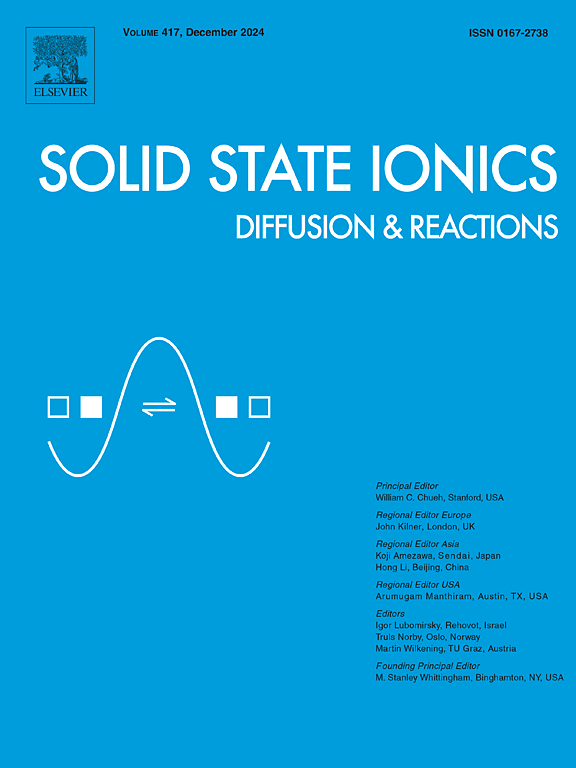Hydrochloric acid-free synthesis of LiNbOCl4 superionic conductor for all-solid-state Li batteries
IF 3
4区 材料科学
Q3 CHEMISTRY, PHYSICAL
引用次数: 0
Abstract
Bulk-type all-solid-state Li batteries (ASLBs) employing inorganic solid electrolytes are considered a next-generation energy storage system due to their potentials to overcome the limitations of current lithium-ion batteries (LIBs) such as a safety concern and narrow operating temperature. Inorganic solid electrolytes (SEs) with high ionic conductivity, good chemical- and electrochemical stability are crucial for high-performance ASLBs. Among them, halide SEs have gained attention for their high-voltage stability, high ionic conductivity, and potentially lower cost compared to sulfide counterparts. Notably, the recently reported LiNbOCl4 exhibiting high ionic conductivity (≥ 10 mS cm−1) can be a promising candidate. However, in the literature, LiNbOCl4 was prepared by the reaction of LiOH and NbCl5, producing caustic HCl as a by-product. This is problematic for large-scale production and may hinder potential improvement through compositional modification. In this work, we demonstrate an alternative hydrochloric acid-free synthesis route using NbOCl3 that can yield LiNbOCl4 with the same crystal structure and high ionic conductivity of 8.4 mS cm−1 at 25 °C. To confirm its feasibility for the bulk-type ASLB application, its electrochemical properties and dry room stability were also investigated.
全固态锂电池超导导体LiNbOCl4的无盐酸合成
采用无机固体电解质的大块型全固态锂电池(ASLBs)被认为是下一代储能系统,因为它有潜力克服当前锂离子电池(lib)的安全问题和狭窄的工作温度等局限性。无机固体电解质(SEs)具有高离子电导率、良好的化学和电化学稳定性,是高性能aslb的关键。其中,卤化物se因其高电压稳定性、高离子电导率以及与硫化物se相比潜在的更低成本而受到关注。值得注意的是,最近报道的具有高离子电导率(≥10 mS cm−1)的LiNbOCl4可能是一个有希望的候选者。然而,在文献中,LiNbOCl4是由LiOH和NbCl5反应制备的,副产物是苛性碱HCl。这对于大规模生产来说是有问题的,并且可能阻碍通过成分修改进行潜在的改进。在这项工作中,我们展示了一种使用NbOCl3的替代无盐酸合成路线,该路线可以在25°C下产生具有相同晶体结构和8.4 mS cm−1高离子电导率的LiNbOCl4。为了证实其在散装型ASLB中应用的可行性,还对其电化学性能和干室稳定性进行了研究。
本文章由计算机程序翻译,如有差异,请以英文原文为准。
求助全文
约1分钟内获得全文
求助全文
来源期刊

Solid State Ionics
物理-物理:凝聚态物理
CiteScore
6.10
自引率
3.10%
发文量
152
审稿时长
58 days
期刊介绍:
This interdisciplinary journal is devoted to the physics, chemistry and materials science of diffusion, mass transport, and reactivity of solids. The major part of each issue is devoted to articles on:
(i) physics and chemistry of defects in solids;
(ii) reactions in and on solids, e.g. intercalation, corrosion, oxidation, sintering;
(iii) ion transport measurements, mechanisms and theory;
(iv) solid state electrochemistry;
(v) ionically-electronically mixed conducting solids.
Related technological applications are also included, provided their characteristics are interpreted in terms of the basic solid state properties.
Review papers and relevant symposium proceedings are welcome.
 求助内容:
求助内容: 应助结果提醒方式:
应助结果提醒方式:


